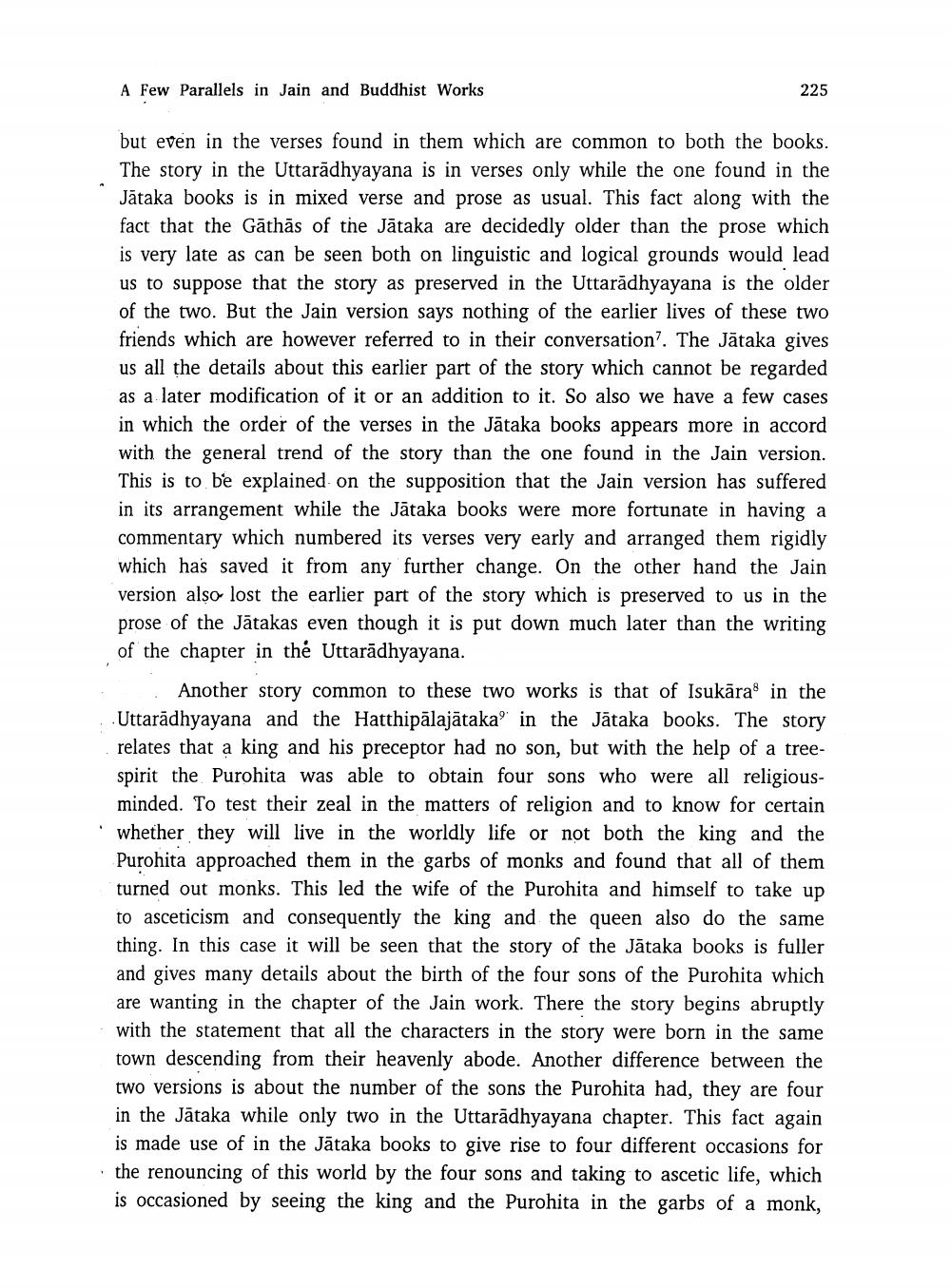________________
A Few Parallels in Jain and Buddhist Works
225
but even in the verses found in them which are common to both the books. The story in the Uttaradhyayana is in verses only while the one found in the Jātaka books is in mixed verse and prose as usual. This fact along with the fact that the Gathas of the Jātaka are decidedly older than the prose which is very late as can be seen both on linguistic and logical grounds would lead us to suppose that the story as preserved in the Uttaradhyayana is the older of the two. But the Jain version says nothing of the earlier lives of these two friends which are however referred to in their conversation'. The Jātaka gives us all the details about this earlier part of the story which cannot be regarded as a later modification of it or an addition to it. So also we have a few cases in which the order of the verses in the Jātaka books appears more in accord with the general trend of the story than the one found in the Jain version. This is to be explained on the supposition that the Jain version has suffered in its arrangement while the Jātaka books were more fortunate in having a commentary which numbered its verses very early and arranged them rigidly which has saved it from any further change. On the other hand the Jain version also lost the earlier part of the story which is preserved to us in the prose of the Jātakas even though it is put down much later than the writing of the chapter in the Uttarädhyayana.
Another story common to these two works is that of IsukāraR in the Uttaradhyayana and the Hatthipālajātaka in the Jätaka books. The story relates that a king and his preceptor had no son, but with the help of a treespirit the Purohita was able to obtain four sons who were all religiousminded. To test their zeal in the matters of religion and to know for certain whether they will live in the worldly life or not both the king and the Purohita approached them in the garbs of monks and found that all of them turned out monks. This led the wife of the Purohita and himself to take up to asceticism and consequently the king and the queen also do the same thing. In this case it will be seen that the story of the Jātaka books is fuller and gives many details about the birth of the four sons of the Purohita which are wanting in the chapter of the Jain work. There the story begins abruptly with the statement that all the characters in the story were born in the same town descending from their heavenly abode. Another difference between the two versions is about the number of the sons the Purohita had, they are four in the Jätaka while only two in the Uttaradhyayana chapter. This fact again is made use of in the Jätaka books to give rise to four different occasions for the renouncing of this world by the four sons and taking to ascetic life, which is occasioned by seeing the king and the Purohita in the garbs of a monk,




